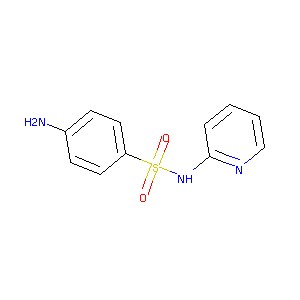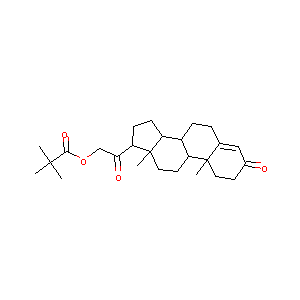| 1 |
Recurrent recessive mutation in deoxyguanosine kinase causes idiopathic noncirrhotic portal hypertension.Hepatology. 2016 Jun;63(6):1977-86. doi: 10.1002/hep.28499. Epub 2016 Mar 31.
|
| 2 |
Drugs@FDA. U.S. Food and Drug Administration. U.S. Department of Health & Human Services. 2015
|
| 3 |
Drug information of Desoxycorticosterone Pivalate, 2008. eduDrugs.
|
| 4 |
A confirmatory method for the simultaneous extraction, separation, identification and quantification of Tetracycline, Sulphonamide, Trimethoprim an... J Chromatogr A. 2009 Nov 13;1216(46):8110-6.
|
| 5 |
Effects of NAT2 polymorphism on SASP pharmacokinetics in Chinese population. Clin Chim Acta. 2009 Sep;407(1-2):30-5.
|
| 6 |
The effect of sulfasalazine on rheumatoid arthritic synovial tissue chemokine production. Exp Mol Pathol. 2002 Oct;73(2):84-92. doi: 10.1006/exmp.2002.2460.
|
| 7 |
Effects of sulfasalazine and its metabolites on steady state messenger RNA concentrations for inflammatory cytokines, matrix metalloproteinases, and tissue inhibitors of metalloproteinase in rheumatoid synovial fibroblasts. J Rheumatol. 2000 Mar;27(3):653-60.
|
| 8 |
Pharmacogenetic characterization of sulfasalazine disposition based on NAT2 and ABCG2 (BCRP) gene polymorphisms in humans. Clin Pharmacol Ther. 2008 Jul;84(1):95-103.
|
| 9 |
Characterization of rat brain aldosterone receptors reveals high affinity for corticosterone. Endocrinology. 1983 Dec;113(6):2043-51.
|
| 10 |
Progress in Brain Research. Chapter 11 - Steroidogenic Enzymes in the Brain: Morphological Aspects. 2010, 181:193-207.
|
|
|
|
|
|
|


